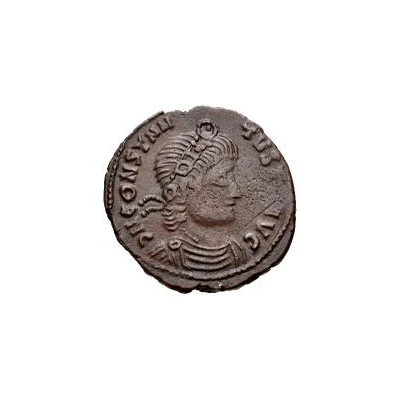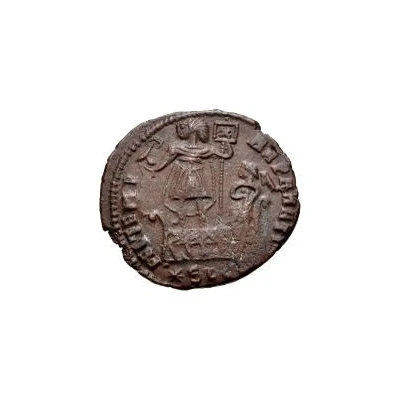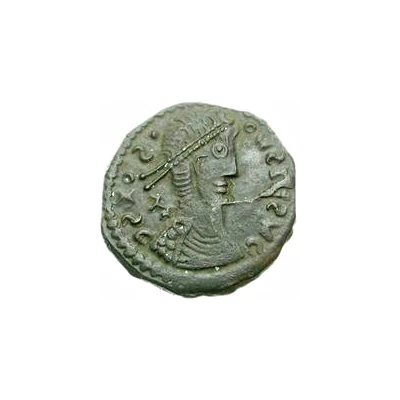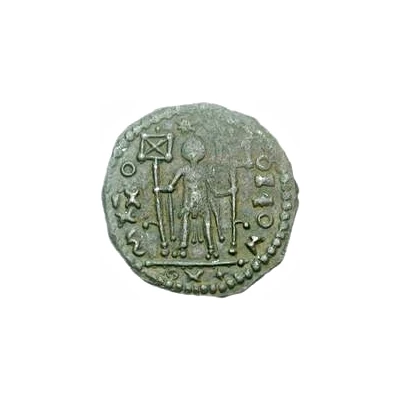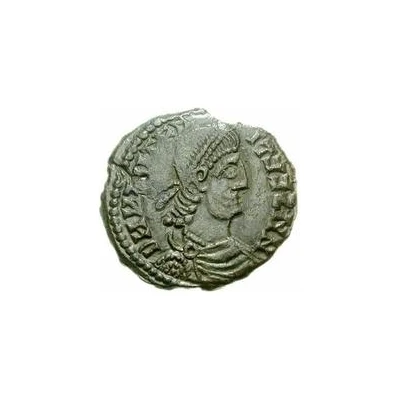
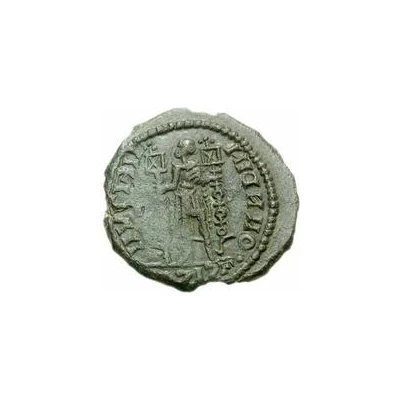

© Classical Numismatic Group, Inc.
Æ In the name of Constantius II; Beaded staffs
| Bronze | 4.98 g | 22 mm |
| Issuer | Uncertain Germanic tribes |
|---|---|
| Type | Standard circulation coin |
| Years | 350-425 |
| Currency | Solidus (circa 301-750) |
| Composition | Bronze |
| Weight | 4.98 g |
| Diameter | 22 mm |
| Shape | Round (irregular) |
| Technique | Hammered |
| Demonetized | Yes |
| Updated | 2024-10-04 |
| Numista | N#153939 |
|---|---|
| Rarity index | 100% |
Reverse
Person holding two staffs and surrounded by legend.
Script: Latin
Lettering:
IIVCIAII - NIDNIIO
SISN
Translation:
[Concordiae Militum]
[Harmony of the military]
Edge
Plain
Comment
Various weights have been recorded of this type from 4.38 grams to 4.98 grams.This coin is said to be struck from the mid-4th to early-5th centuries. While the mintmarks on most of these types are of uncertain mints, the prototypes for those coins were either struck in Thessalonica mint or Siscia mint, with those two types both being first struck in 350. With that being said, that is the most-likely beginning date for this entire type of AE struck by an Uncertain Germanic Tribe.
The denominations of bronze coins that are unknown to numismatists are referred to as Æ (AE), followed by the coin's diameter. The Æ part simply means the coin is made of a base alloy, and because the diameter of these coins is never exactly as intended, different numbers can appear after the Æ for the same type.
The exact lettering of the surrounding legend may vary.
Interesting fact
One interesting fact about this coin is that it features a rare combination of Roman and Germanic elements. The coin was issued in the name of Constantius II, a Roman emperor, but it also includes a depiction of beaded staffs, which are typically associated with Germanic tribes. This blending of cultural influences reflects the complex political and cultural dynamics of the time period.
